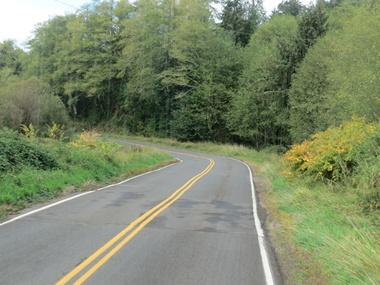
2015-09-21: Detour
We decided to take the scenic route along the Columbia River this time which really was pretty but made for a much slower and longer drive. The drive was made even longer when we came upon this detour that wound us along this rather narrow road with drop-offs on both sides through farmlands. It would have been fine except for the oncoming logging truck that didn't seem to slow down!
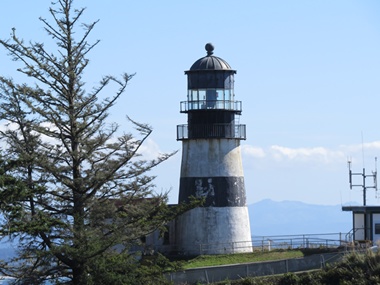
2015-09-22: Cape Disappointment Light
In 1788 Captain John Mears named this north headland Cape Disappointment in reflection of his mood when he failed to locate the Columbia River. The light was lit in 1856 and was the first lighthouse in the Pacific Northwest. In addition to the light, the station was equipped with a 1,600-pound bell that was powered by a striking mechanism. This lighthouse had several shortcomings. The fog bell ineffective because it was often inaudible due to the roar of the ocean waves so was discontinued in 1881 and moved to another location. Also, the light was not visible to ships approaching from the north, so in 1897 North Head Light was erected. The lighthouse was electrified in 1937 and automated in 1973.
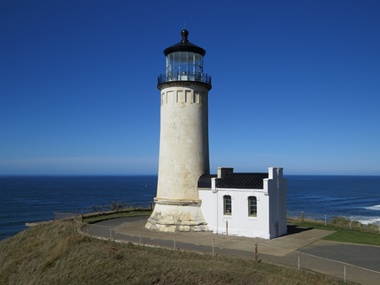
2015-09-22: North Head Lighthouse
The North Head Light, designed by Carl Leick, was constructed in 1897 because mariners complained that Cape Disappointment Lighthouse was obscured by the headland to ships approaching from the north. The new lighthouse was a 65-foot tower set on a 130-foot cliff directly facing the ocean so it would be visible to ships traveling from the north. Other buildings included two oil houses, a keeper's residence, duplex housing for two assistant keepers, a barn and outbuildings, all of which remain on site. The lighthouse was automated in 1961 and still helps guide ships through this dangerous area where many ships have been lost.
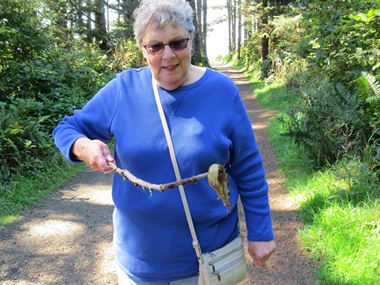
2015-09-22: Slug
As we were walking back up the trail to the car we spotted this slug. Slugs are land-living gastropods and their soft, slimy bodies require a moist environment. During dry weather, they retreat to damp hiding places but since we've had a considerable amount of rain, they are on the move.
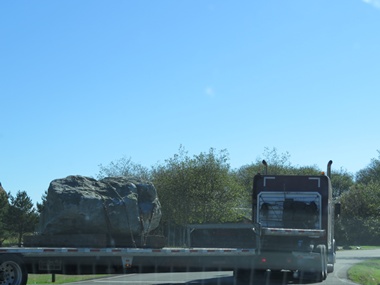
2015-09-23: Boulders
We kept seeing flatbed semi trucks hauling huge boulders and knew there must be a jetty renovation taking place. The boulders were being hauled some 125-miles from a rock quarry near Tenino. Each truck could haul either one or two of these mammoth stones which weigh as much as 30 tons each!

2015-09-23: Jetty
The North Jetty near the mouth of the Columbia was crumbling and needed to be shored up. The huge boulders were transported out to the end of the jetty and then wedged into place to help to hold back the power of the Pacific Ocean at the mouth of the Columbia. The road to the jetty is closed because of the construction so I had to settle for this photo taken from the North Head Light.
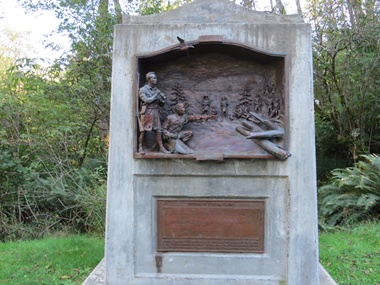
2015-09-23: Bas-Relief
It was in this vicinity that, in November of 1805, the Lewis & Clark Expedition set up camp, having finally reached their goal - the Pacific Ocean. This large bas-relief bronze sculpture installed in 2004 and created by Gareth Curtiss commemorates this historic moment.
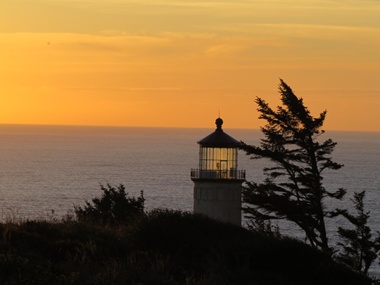
2015-09-23: Sunset
We returned to North Head Light to capture it at sunset.

2015-09-24: Bike Rack
I couldn't resist taking a photo of one of the unique fish bike racks along the Discovery Trail, a bike and walking trail that follows the shore from Long Beach to Ilwaco.
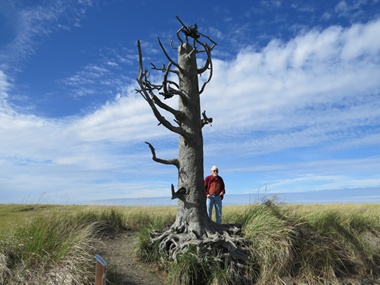
2015-09-24: Tree
This 20-foot tall bronze tree along the Discovery Trail is an interpretation of the tree upon which Clark records that he carved his initials during the walk along the shore. The original tree, which entries say was in this general area, is long gone swept away by tidal action many years ago.

2015-09-24: Bronze Sturgeon
Continuing along the trail we found these bronze sculptures of Capt. William Clark and a 10-foot-long sturgeon. The idea for a sturgeon sculpture came directly from Clark's journal: "I proceeded on the Sandy Coast 4 miles, and marked my name on a Small pine, the Day of the month & year, &c. and returned to the foot of the hill, from which place I intended to Strike across to The Bay, I saw a Sturgeon which had been thrown on Shore and left by the tide 10 feet in length, and Several joints of the back bone of a whale which must have foundered on this part of the Coast." The sculptures were created by Jim Demetro.

2015-09-24: Pacific
Just a beautiful shot of the sea grass, dunes and the Pacific.
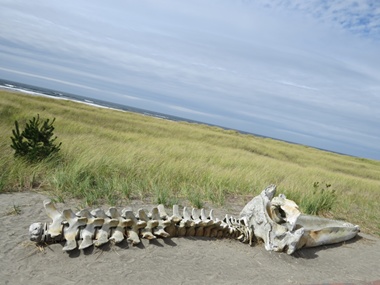
2015-09-24: Whale Skeleton
A rearticulated skeleton of an immature 38-foot gray whale that washed up on shore is on display along the trail. It is reminiscent of one seen by Clark and his men on March 19, 1805 during their time on the Long Beach Peninsula.
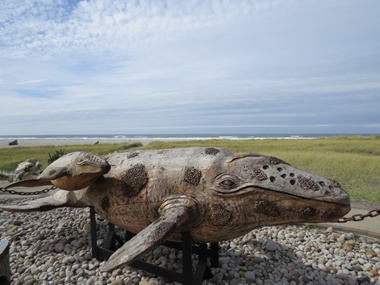
2015-09-24: Whale Carving
On Nov. 18, 1805, Captains Meriwether Lewis and William Clark happened upon a whale carcass while exploring the area near Cape Disappointment. Though it was certainly one of their first and only encounters with an animal of that size, it was the California condor that feasted on the carrion that captured their fancy - one of the party shot it, and Clark meticulously recorded its dimensions in his diary. This life-like sculpture of a pod of whales carved from a huge cedar tree by Joshua Blewett helps to conjure the image of what Lewis and Clark recorded.
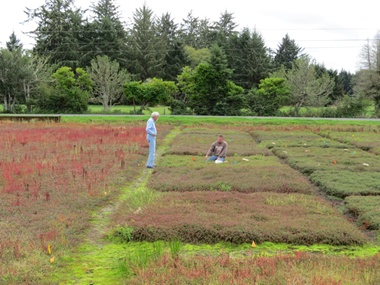
2015-09-25: Cranberry Bog
We visited the Washington State University research farm and got to meet one of the researchers who was nice enough to explain what he was doing. These bogs were pruned in three different ways and he was trying to determine which way would yield more cranberries.
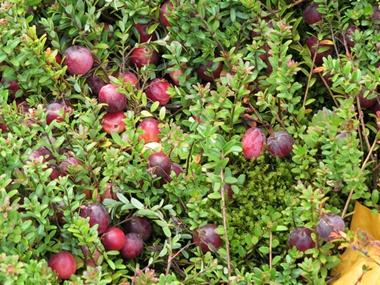
2015-09-25: The Fruit
This was the first time we had ever had the opportunity to see how the berries grow up close and personal. We also had an opportunity to taste two different varieties picked right off the vine. One was sweeter than the other but it was still not sweet!
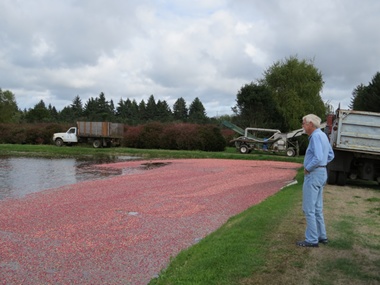
2015-09-25: Working Farm
We were given directions as to where we might go to see a working cranberry farm. We found this one that had been flooded but was not yet ready for collection. All of the cranberries from this area are used for juice while those in the Grayland area are packed whole.

2015-09-25: Sunset
It had been cloudy for most of the day so when we went out to dinner I didn't bother to take my camera. Coming out of the Elks we saw there was going to be an incredible show of color so we headed down to the beach. I was able to capture this photo on my phone.
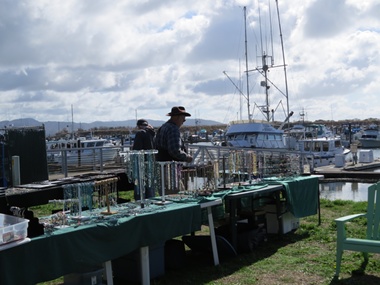
2015-09-26: Saturday Market
The neighboring town of Ilwaco holds a Saturday Market along the pedestrian only waterfront overlooking the marina and Baker Bay. What a nice place to take a stroll.

2015-09-26: Port of Ilwaco
The picturesque Port of Ilwaco is nestled just inside the Columbia River bar. It is a working fishing village in a scenic and tranquil setting that is idyllic for both recreational boaters and commercial fishermen.
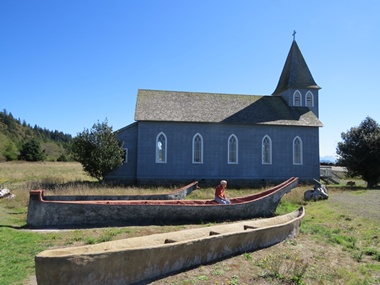
2015-09-27: McGowan
The Chinook people lived here where the river meets the ocean in Qiqayaqilxam or Middle Village for countless generations. In 1805 Lewis and Clark achieved their mission of reaching the Pacific Ocean in this same area. By the 1850's, the McGowan family settled here, established a town, a salmon fishery and built St. Mary's Catholic Church which still stands today.

2015-09-27: Super Moon
It really was quite exciting to see not only a super moon but to also get to witness an eclipse of the moon that happened during an hour of the night when I was awake. By the time we saw the moon, it was already totally eclipsed so we got to see it as it came back into view. Needless to say, I took lots of pictures but I've chosen this one from 8:23. Strangely enough, during the entirety of the eclipse, I lost all 4G service on my phone - was this a coincidence or a phenomenon of the eclipse? (4G came back a little after 10:00)